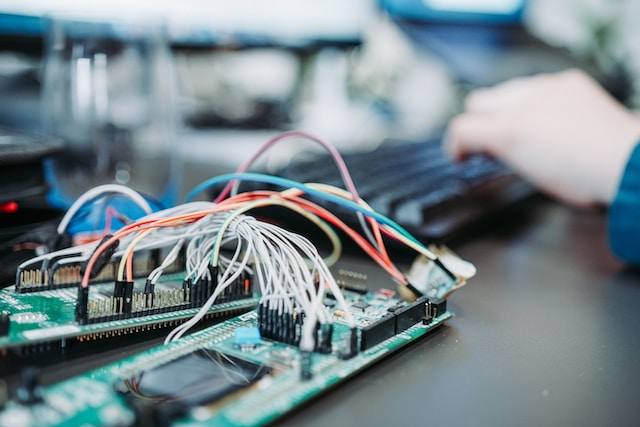Looking for a robotics challenge to finish out the school year? Why not hold a Sumo-Bot competition?
Last May, I was invited to McCoy Elementary School in Georgetown, Texas to see the sumo robots in action. The little bots moved across a ring, attempting to push the other out, just like the traditional form of Japanese wrestling. After the competition, I chatted with G/T teacher Tina Bertucci, and she gave me the lowdown on their robotics adventure.
Tina started our conversation with, “I have been doing LEGO robotics for a long time with my G/T kids. But then, Janae Pierce, the librarian, and I got together and we wanted to have this opportunity for all students, not just gifted and talented.”
Janae started the pilot program with ten LEGO MINDSTORMS EV3 kits. Students met in the library the first year with a 7:30 a.m. start. Tina said, “They loved it!” Several grants later, and all that student enthusiasm has taken them where they are now.
How the Competition Works
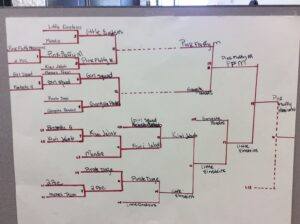
Starting the third week of school, the five fifth-grade classes at McCoy Elementary spend 45 minutes of their Friday science class learning about robotics. They follow a simple curriculum which meets the time allotted for robotics. Starting in February, they get down to business on the Sumo-bot Challenge.
That’s right. Sumo-wrestling robots.
New teams are formed with three to four students. The teams have four weeks to design and build their sumo bots. The next four weeks are then spent on programming.
The McCoy Sumo-Bot Competition is a two-day event. The first day of competition starts in each classroom with double elimination game play. The two winners from each class will then move forward to compete the next day. Tina and Janae created the bracket for the McCoy Elementary Sumo-Bot Competition final competition. The lunchroom is the place to be with all the fourth and fifth graders, invited guests (parents and grandparents), and school administrators. I was so honored to be a special guest.
Rules for the Sumo-Bots
McCoy Elementary allowed me to share the rules they have created for their Sumo-Bot competition. Check them out, and consider what rules you might use in the classroom.
- Robots must start facing directly away from each other, not touching, in the center of the arena. On “Ready, set, LEGO!” each team will press the start button simultaneously.
- The robots will proceed in combat until one unit is disabled or removed from the ring. A robot is considered “removed” from the ring when the drive system falls off the edge and touches the floor. One whose body hangs over the edge is not considered “off” until it physically tips off the edge and touches the floor.
- A sumo-bot that disables or removes the enemy gets a win credited to it, and if a robot “suicides,” the other robot gets a win credited to it. Should one robot become disabled (flipped on its back or side, for instance) and is unable to move, the ring officials will award the victory to the remaining robot.
- If the judge determines that both robots are stuck in an entanglement or deadlock for at least one minute, the judge will call for a Reset. If the judge declares a Reset, the clock is stopped, the robots are put back in starting positions, and the robots will be reactivated and clock restarted.
- A match is over after five minutes or after one “Win” occurs. If there is no victor after five minutes, teams will reset and start over. At the end of each round, the contestants are responsible for making sure the ring is clean and ready for the next round.
- The judgment of the ring officials is final.
Create Your Own Sumo-Bot Ring
After attending the competition, I wanted to add the Sumo-Bot Challenge to the Mission Possible Summer Camp: LEGO EV3 Robotics. The only item necessary to complete the addition of the Sumo-Bot Challenge was a Sumo-Bot ring. Following are my step-by-step directions to make your own.
Step 1: Gather Your Materials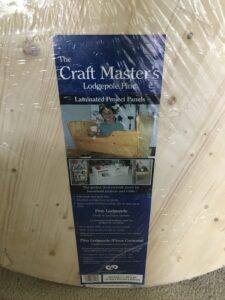
- 2 oz. white acrylic paint
- 8 oz black acrylic paint or 1 can of spray paint
- Painters tape
- Foam brush
- 36” circular piece of wood. (1x36x36)
The paint, tape, and foam brush can be easily be found at Walmart. Hunting down a piece of circular wood was a bit more challenging. I finally found the perfect piece of wood at Lowe’s. Not all the stores carry this product, so it is best to look online at their availability. I had to travel to San Marcos to find one. My best advice is to get online and check out both Home Depot or Lowes.
At the time I was looking for one, Home Depot carried these round panels, but only in 24” — which is too small for the LEGO EV3 robots.
Step 2: Tape the Outer Edge to Paint the Inner Circle
First, you will need to mark off a two-inch rim from the edge. There are many ways to do this, but I used a ruler and made a small mark every inch. Then I took my blue tape and taped from mark to mark around the board. I taped all the way to the edge in case I overshot my spraying ability.
Step 3: Paint the Large Inner Circle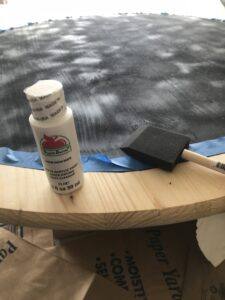
I took my spray can of black paint and sprayed the center. Let the paint dry completely.
Note: My spray paint might have been old as it left fine particles on the surface. I brushed them off, but my advice is to use the black acrylic paint.
Step 4: Prep and Paint the Edge White
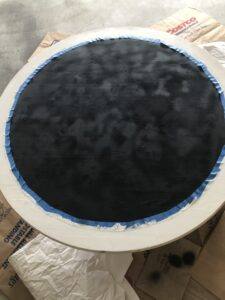
The next step was to place another ring of blue tape along the edge of the inner black circle. I took more time on this taping as I wanted to make as smooth a rounded edge as possible. Go ahead and use your foam brush for the white paint. Let the first coat dry completely and then give it a second coat. For the last step, carefully peel off the blue tape.
If you make a sumo-bot ring, please email me at preimers@tcea.org with additional tips and tricks you can share with future builders. And feel free to send pictures of your Sumo-Bot Competition, as I would love to hear how your contest goes!
Featured image and sumo-bot ring photos by author.


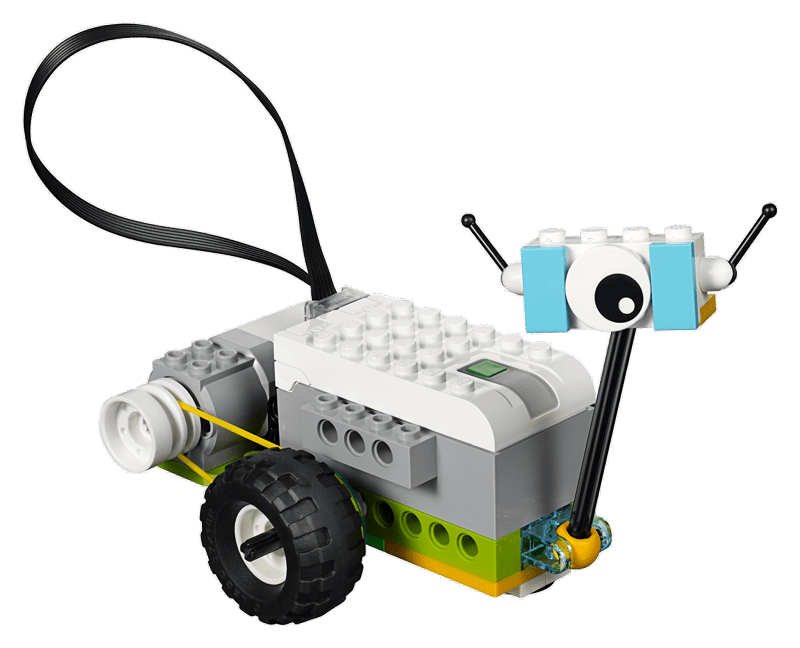

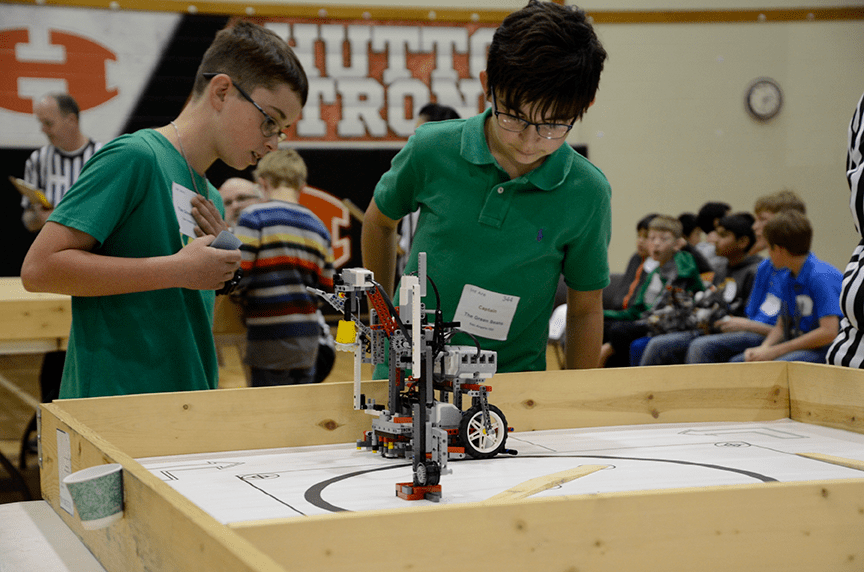
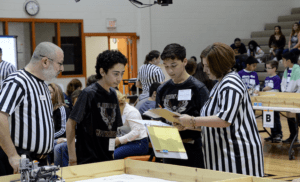 This year’s challenge, Mastering Mars, allowed students the opportunity to task their robots to prepare the Martian environment for human settlement and iron mining. Each team’s robot had to complete as many tasks as they could within the two-minute time frame. Teams were allowed to use one LEGO Mindstorms programmable processing unit, LEGO-branded motors and sensors, other LEGO-branded devices, and non-LEGO parts not to exceed the five dollar limit.
This year’s challenge, Mastering Mars, allowed students the opportunity to task their robots to prepare the Martian environment for human settlement and iron mining. Each team’s robot had to complete as many tasks as they could within the two-minute time frame. Teams were allowed to use one LEGO Mindstorms programmable processing unit, LEGO-branded motors and sensors, other LEGO-branded devices, and non-LEGO parts not to exceed the five dollar limit.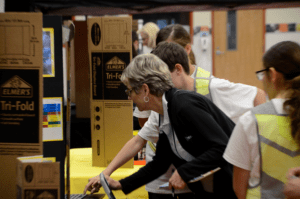 As Arena contestants battled it out for the top spot, Invention participants exercised their creative-thinking skills by designing a robot to solve a real-world problem of their own choosing. From iPotty toilet assistance for the elderly to oil pipe sealing robots, students of all ages let their imaginations run free to create exciting solutions to make the world a better place. Other solutions offered to save lives, assist entomologists to gather insect specimens, and collect dangerous metal objects, among others.
As Arena contestants battled it out for the top spot, Invention participants exercised their creative-thinking skills by designing a robot to solve a real-world problem of their own choosing. From iPotty toilet assistance for the elderly to oil pipe sealing robots, students of all ages let their imaginations run free to create exciting solutions to make the world a better place. Other solutions offered to save lives, assist entomologists to gather insect specimens, and collect dangerous metal objects, among others.

